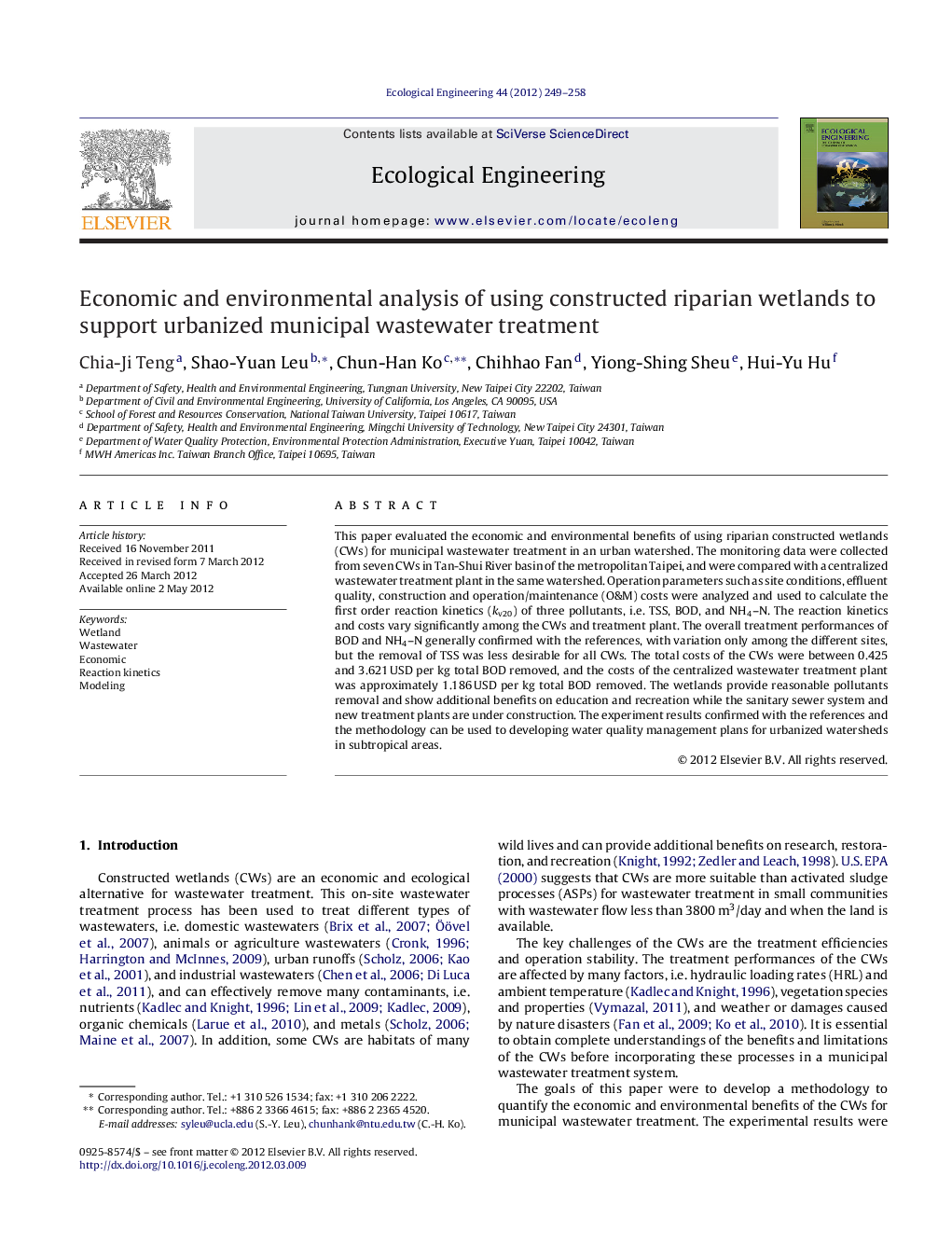| Article ID | Journal | Published Year | Pages | File Type |
|---|---|---|---|---|
| 6302713 | Ecological Engineering | 2012 | 10 Pages |
This paper evaluated the economic and environmental benefits of using riparian constructed wetlands (CWs) for municipal wastewater treatment in an urban watershed. The monitoring data were collected from seven CWs in Tan-Shui River basin of the metropolitan Taipei, and were compared with a centralized wastewater treatment plant in the same watershed. Operation parameters such as site conditions, effluent quality, construction and operation/maintenance (O&M) costs were analyzed and used to calculate the first order reaction kinetics (kv20) of three pollutants, i.e. TSS, BOD, and NH4-N. The reaction kinetics and costs vary significantly among the CWs and treatment plant. The overall treatment performances of BOD and NH4-N generally confirmed with the references, with variation only among the different sites, but the removal of TSS was less desirable for all CWs. The total costs of the CWs were between 0.425 and 3.621Â USD per kg total BOD removed, and the costs of the centralized wastewater treatment plant was approximately 1.186Â USD per kg total BOD removed. The wetlands provide reasonable pollutants removal and show additional benefits on education and recreation while the sanitary sewer system and new treatment plants are under construction. The experiment results confirmed with the references and the methodology can be used to developing water quality management plans for urbanized watersheds in subtropical areas.
